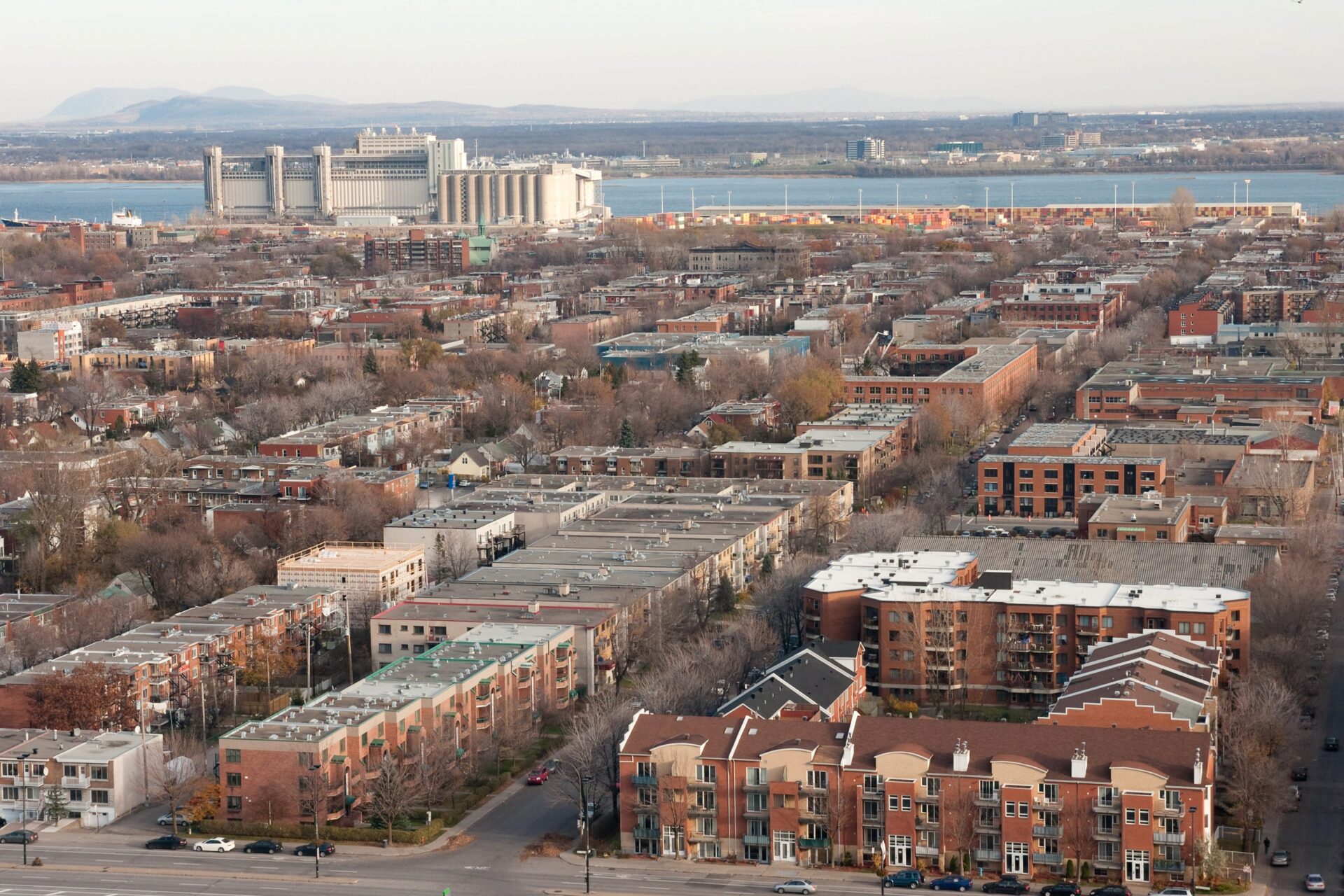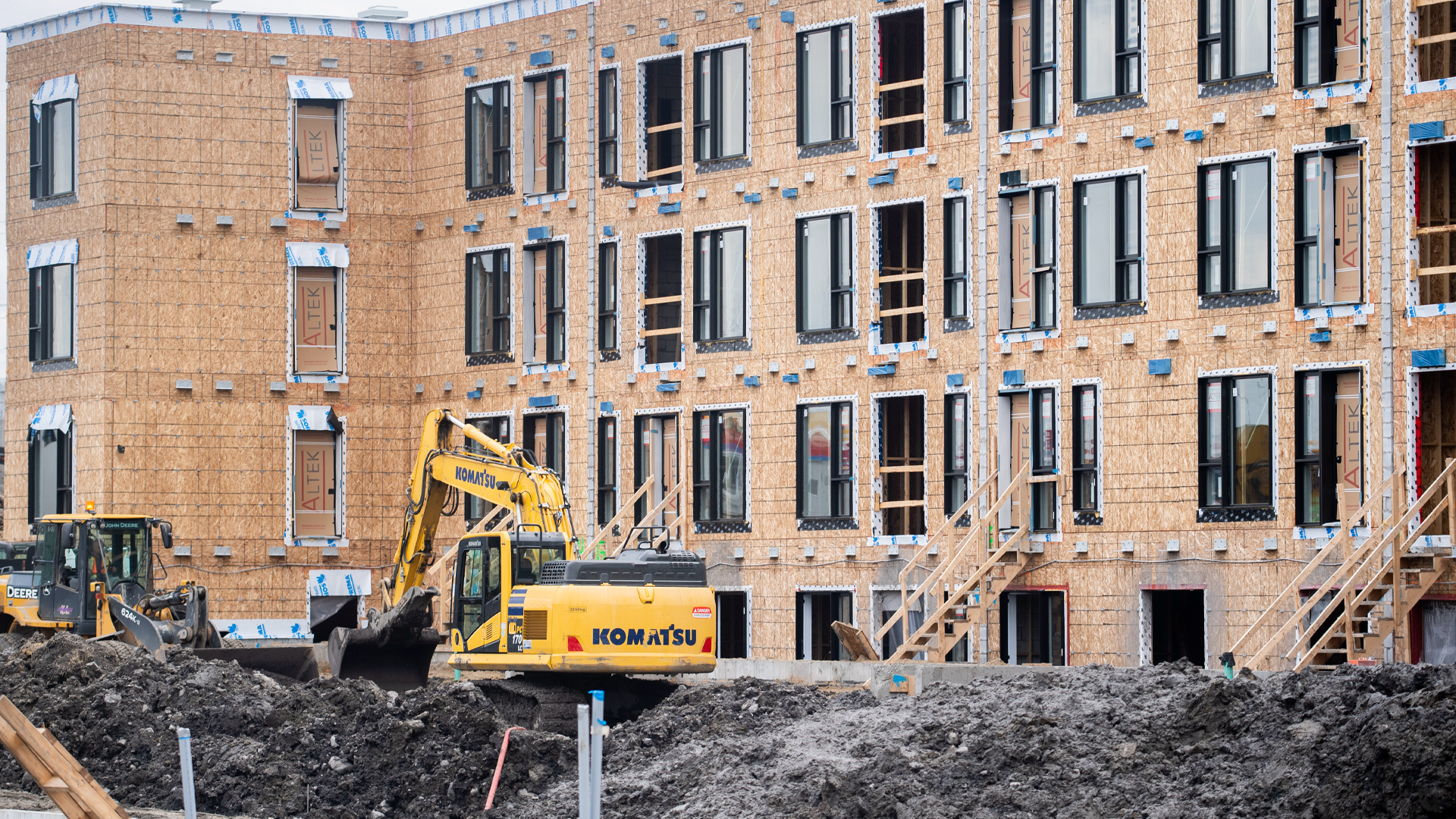
(Version française disponible ici)
“We have met the enemy and he is us” – a famous quote from the vintage comic strip Pogo – nicely describes Canada’s housing conundrum.
The core challenge remains the failure of housing supply, public or private, to keep up with rising demand. Canada’s remarkable population growth, fuelled by immigration, permanent and temporary, has amplified the imbalance.
In the past, notably during the baby-boom years, housing supply largely kept up with growing demand. Why not today?
Some point to the federal government’s abandonment of subsidized housing during the Mulroney years, which is true. But that’s only part of the problem. Social housing never accounted for more than 10 to 15 per cent of local housing supply.
So, we are back to a simple question: Why are more houses not being built where they are needed? The answer in part is that we have become richer and more demanding. We are also an eminently democratic nation, respectful of citizen concerns. But those can often run counter to the objective of increasing housing supply.
The essential challenge for our municipalities is bringing citizens on board with ways to deal with the housing crisis. But before proposing how this might be achieved, we need to better identify the problem.
What happens next door matters
Housing is different from other goods. My neighbour’s purchase of a flatscreen TV does not affect my perceived well-being. A building going up next door, especially if it is tall, is another matter.
Housing cannot be separated from its surroundings, which is why urban planning came into being. Almost all Western societies introduced some form of zoning in the 20th century. No one wants a petrochemical plant or quarry next door to their home. However, zoning rapidly moved beyond protection from such obvious nuisances.
We know the outcome: much if not most land in Canada’s growing, suburban cities is zoned for single-family homes with gardens, garages and pools – the Canadian dream. The equally obvious result is restricted supply: i.e., the number of housing units that can be built per square kilometre.
Citizens, understandably, want a say in what is built around them. Local government exists to address such matters. This is also our point of entry to the concept of NIMBY (Not In My Back Yard), the modern byword for urban obstructionism.
NIMBY Battle No. 1: New housing is not in my interest
The residential geography of Canada’s cities is largely set. It is all too easy with hindsight to look with disapproval on past zoning decisions. It is equally easy to bemoan the selfishness of homeowners thwarting new housing. Yet, we are all potential NIMBYs.
Most individuals have no personal interest in seeing a big building go up next door. That in a nutshell is the problem. The power of NIMBYs does not stop there. The twin sisters of NIMBY’s selfish roots are community power and citizen participation, with each reinforcing the other.
For example, in July, 26 individuals signed a register in the suburban Montreal borough of Pierrefonds-Roxboro – the required number to trigger a referendum, thus blocking the construction of a six-storey residential building. The question is not whether 26 is a reasonable number, but rather how local referendums should be viewed: as necessary components of local democracy or as much-abused tools of obstruction?
In 2017, the Quebec government passed a law empowering municipalities to override the right to local referendums provided they are replaced by a non-binding consultation process. Almost no city, Montreal included, has availed itself of this option. Simply put, what mayor wants to be seen as abrogating the right of fellow citizens to vote on major projects?
A new Quebec law enacted this year exempts specified projects from referendums (i.e. projects increasing building heights, reducing parking spaces, etc.) to be replaced by a written consultation process. The law has predictably been criticized as a negation of local democracy.
Referendums and consultations are merely bumps in the road toward the true obstacle: popular will. Building permits are a municipal responsibility. Decisions reflect popular preferences.
Last year, the Montreal suburban municipality of Pointe-Claire froze a residential project of two 25-storey rental buildings and a 20-storey tower for seniors to be built on the site of a parking lot adjoining a major shopping centre and future light rail station. This was by all indications an ideal project: no green space sacrificed, near public transit, good for seniors.
Yet, the project is not moving ahead. Why? Because in the words of Pointe-Claire’s mayor, newly elected on an anti-densification platform, that is what citizens want: “My vision is the vision of the citizens, it’s that simple . . . People want a suburb, not a downtown.”
That is why, after all, they choose to live there. Therefore, no need for consultations or referendums. But what else would one expect from a leafy upper-income municipality?
Allow me to disabuse readers who see NIMBYs as being primarily driven by well-off homeowners. Let us move to Hochelaga-Maisonneuve, a traditionally working-class neighbourhood east of Montreal’s downtown.

NIMBY Battle No. 2: Defending the community
A developer is currently proposing a $350-million 10-storey project of some 1,000 units in Hochelaga-Maisonneuve. The project again pushes all the right buttons, including subsidized units as well as planned green spaces and community spaces.
Yet, the project is being opposed by a local activist group claiming it fosters “gentrification” – a favorite bogeyman of NIMBYs. Put crudely, while the rich don’t want the poor next door (arguing that they drive prices down), the poor also don’t want the rich next door (arguing they drive prices up). The end result is the same: less housing gets built.
Opponents argue the project will also block sunlight, as well as create traffic congestion and generally undermine community life – all well-known NIMBY battle cries. The project remains subject to a possible referendum initiative. At the time of writing, it remained unclear whether the project will see the light of day.
The aversion to towers is also a factor in the current tug-of-war between the City of Montreal administration and developers around the redevelopment of lands near the Old Port – the largest residential project currently under review in the city.
The developer’s plan calls for a project of several 20- to 40-storey towers with 9,500 residential units. The city favours a more modest project of 7,500 dwellings with a lower height, arguing there is a need to keep construction at a “human scale” – another laudable concept, but one that is difficult to define objectively.
The takeaway from all of the examples above is not whether these projects will eventually be built, but that approval has become an increasingly costly process almost everywhere.
Not all developers have the resources in time and money to go from point A to point B, with the heightened risk of sometimes never reaching point B. Many developers will simply abstain. NIMBYs do not need to campaign successfully to block projects from being built. The threat of NIMBYs is often enough.
Can local democracy be made to work for housing?
Simply demonizing NIMBYs is not constructive. Indeed, they sometimes fulfil a useful function. Concerns expressed by opponents are often valid. Public consultations can improve the final project. But is it possible to curb NIMBY obstructionism while also keeping the benefits of citizen participation?
British Columbia and Ontario recently passed legislation aimed at stimulating new housing construction. Both contain numerous positive measures (i.e. loosening constraints on what can be built where) but both basically sweep the problem under the rug by adopting a top-down carrot-and-stick approach, which may not always be welcomed locally.
B.C.’s Bill 43 gives the minister the power to override municipal bylaws and permits. It remains to be seen to what extent such powers will actually be used, given they may come with a possible political cost.
Ontario’s legislation sets housing targets for the province’s major cities, establishes a fund to reward cities that comply and gives some mayors additional powers to implement necessary measures. Here again, we may ask whether the promised carrots will be sufficient to sway residents who don’t want more neighbours. Mayors want to be re-elected, after all.
Getting locals on board
Why not pre-empt NIMBYs by bringing citizen participation to the forefront with the help of modern IT and interactive mapping?
I see a variation on Ontario’s plan, where municipalities, not the province, set mandatory housing targets. The sum total of municipal targets should be consistent with projected provincial housing targets. If not, municipalities might be asked to redo their homework.
In Quebec, the requirement might apply to all municipalities part of a Census Metropolitan Area and other municipalities with 25,000-plus inhabitants. Make meeting targets an object of local pride. Why not envisage a province-wide competition, with the top municipalities perhaps financially rewarded as Ontario does?
Housing targets would be determined via local consultation. Residents would have access to online neighbourhood maps and data, a purpose-built app provided to municipalities by the province, and then asked to identify potential sites for new housing, including targets for building heights and social housing.
Why bricks and mortar alone won’t solve the housing crisis
For the latter, to avoid unrealistic expectations, residents would have information on available funding for subsidized housing. The results of the consultations would be made public with appropriate maps and height and density targets.
City councils would remain the final arbitrator, adopting the necessary zoning bylaws. Zones thus identified would be exempt from referendums and certain regulatory obligations.
However, residents could continue to have a voice through non-binding, time-limited consultations, notably on the design and architectural aspects of proposed projects. Added provincial (and/or federal) carrots would, where appropriate, come in the form of infrastructure financing agreements for major approved projects.
Each city would be different. The devil is in the details, as always. However, the most useful outcome of such a reverse-NIMBY approach would hopefully be a better popular understanding of the choices and trade-offs that need to be made if Canada’s housing crisis is to be resolved.
This article is part of a series called How does Canada fix the housing crisis?









